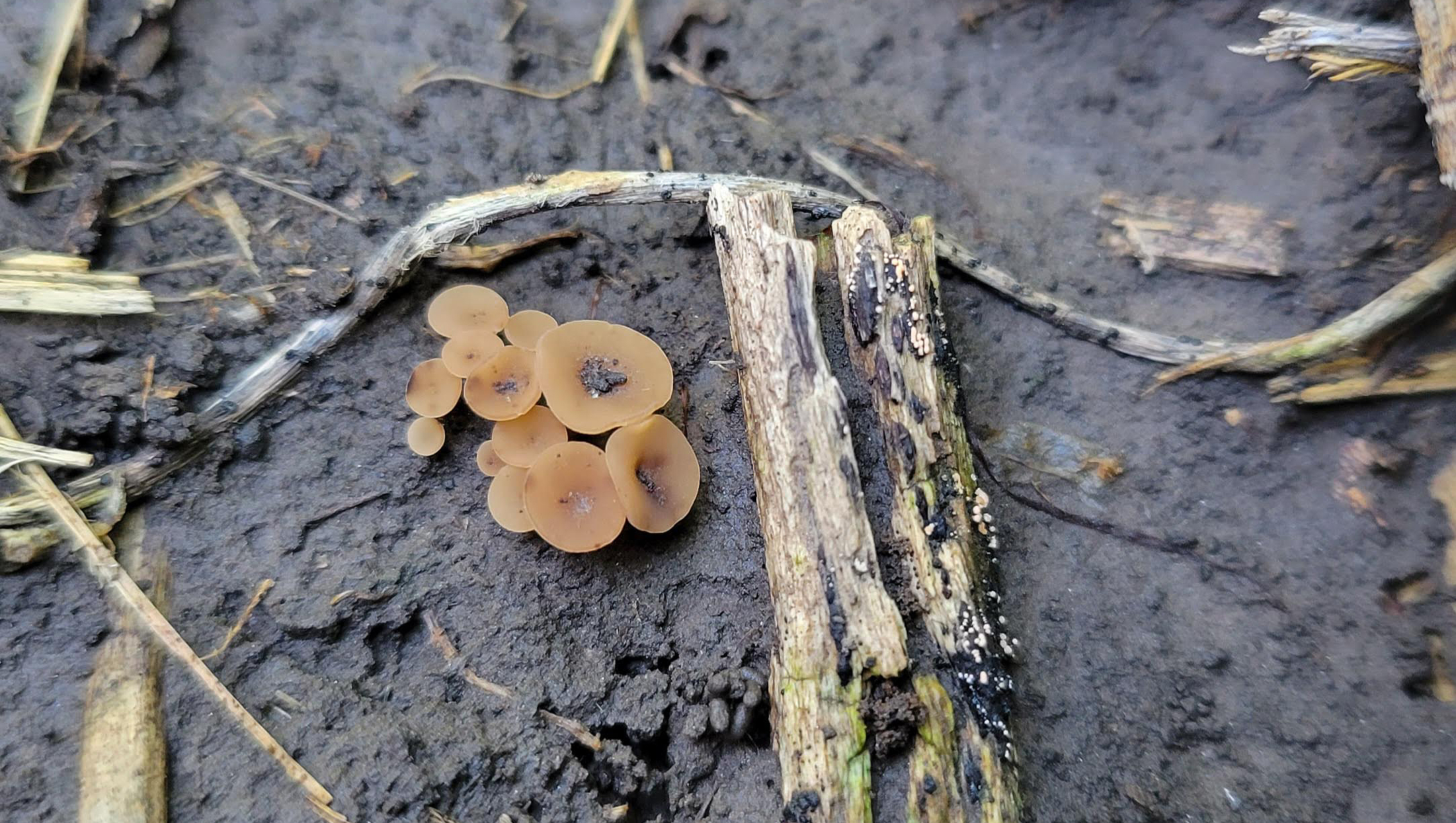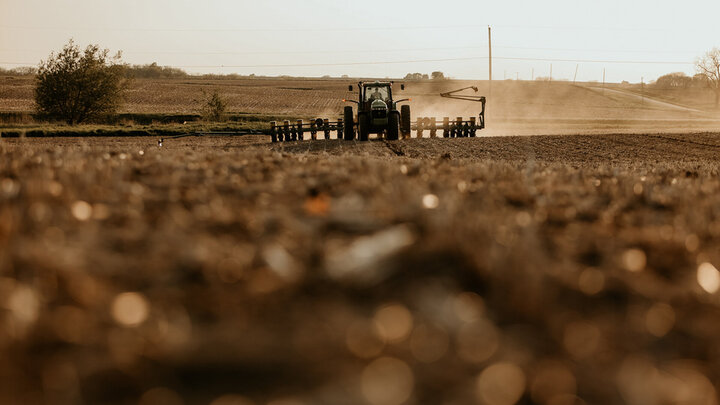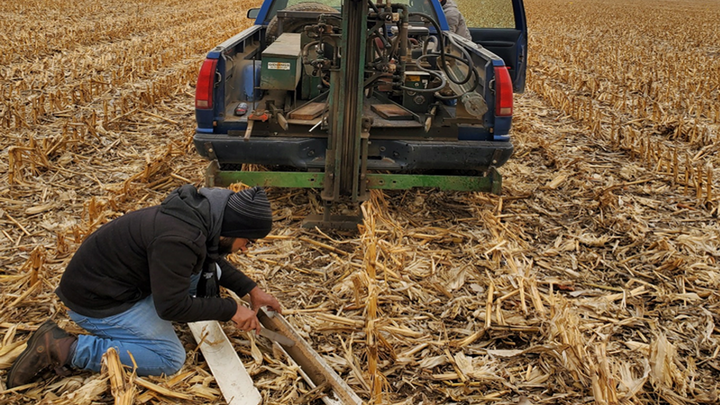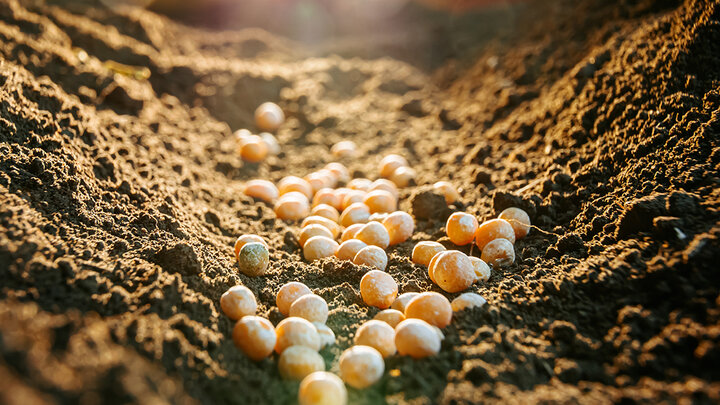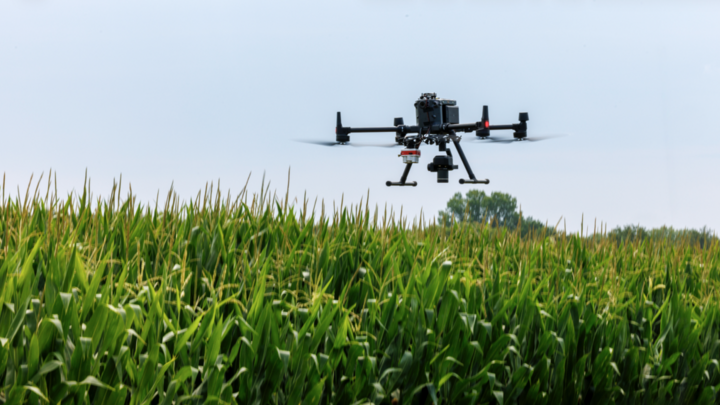By Dylan Mangel, Extension Plant Pathologist
Pathogen
Sclerotinia stem rot, also known as white mold, is a fungal disease of soybeans caused by the pathogen Sclerotinia sclerotiorum. The fungus can survive overwinter in Nebraska soils as hard dark structures called sclerotia.
Sclerotia are variously shaped bodies of tightly packed white mycelium covered with a dark, melanized protective coat. As plants develop in the spring, saturated soils and a full canopy favor the emergence of mushroom-like structures, called apothecia, from the sclerotia. These mushroom-like bodies produce millions of airborne spores almost daily over a seven- to 10-day period around soybean flowering. These spores are released during favorable weather conditions and can travel to other fields in air currents.
Sclerotinia stem rot infection of soybean. (Photo by Dylan Mangel)
Spores infect plants like soybean primarily through colonized blossoms as they senesce, but they can also infect through injured plant tissue. Free moisture must be present on the plant surface for infection to occur. Flowers on the tips of small pods provide a common entrance for the fungus. Invasion of the pod and eventually the stem may lead to lesions covered with sclerotia.
This disease typically prevents successful pod development. As the disease develops, the pathogen begins to make more sclerotia both on and in the soybean stems. During harvest, these survival structures thresh free and are scattered back onto the soil. These sclerotia can survive in the soil for several years.
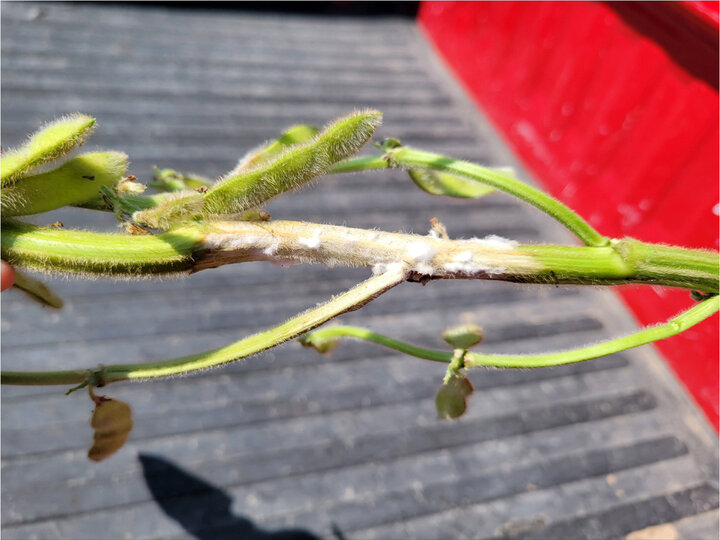
Disease Symptoms
Initial symptoms are visible during pod development. Leaves will wilt and turn gray-green before turning brown, curling and dying. It is important to observe stems and pods for white mycelium and sclerotia to differentiate Sclerotinia stem rot from other stem and root rot diseases. Since blossoms are infected first, early stem or pod water-soaked symptoms often initiate near colonized flowers.
In a few days, diseased stem areas are killed and become tan and eventually bleached. This bleached stem will have a pithy texture and will shred easily. Infected plant parts generally will have signs of the fungal pathogen as white, fluffy mycelium during humid conditions and sclerotia on the surface of or embedded in the stem tissue.
Although stem and pod infection usually occur about six to 14 inches above the soil line, some basal infection also may be found.
Infections will occur after flowering has initiated in the crop.
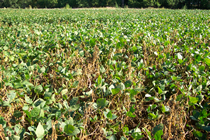
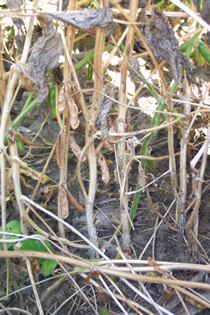
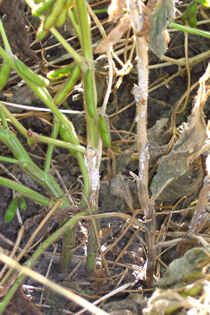

Favorable Environmental Conditions
Disease development and spread will occur from flowering until pod formation. As the flower is directly related to disease development, this disease will only develop if we have wet, humid conditions at flowering with moderate temperatures (<85°F). Due to the moderate temperature requirement, this disease has typically been a bigger problem in more northern counties of Nebraska. However, in recent years white mold has been observed more in irrigated fields that have consistent moisture and typically cooler canopy temperatures than rainfed fields.

Management
Genetic Resistance
Soybean varieties vary in their response to Sclerotinia. Most seed providers rate varieties against white mold and provide these ratings in seed catalogs. Avoid planting highly susceptible varieties in fields with a history of this disease. In addition, planting varieties that are short and do not lodge will reduce disease potential.
Cultural Practices
Row spacing has been shown to influence this disease, with narrow rows resulting in more Sclerotinia stem rot. Fields with a history of Sclerotinia are encouraged to plant on 30-inch rows, over 15-inch rows, to delay canopy closure and decrease plot humidity. Avoid irrigation during flowering if possible.
While rotation to a non-host crop, like corn, will help decrease white mold pressure, rotation alone will not prevent disease development. Utilizing a longer rotation with corn and wheat has been shown to reduce pathogen buildup and disease risk. As several weeds can be a host for this fungus, it is important to maintain good weed control during rotation years. Several cover crop species can also host white mold.
Chemical/Biological Control
Several fungicides are labeled for white mold control, and there have been several recent label additions. Foliar fungicides are only effective when applied during the plant’s susceptibility window during flowering. Therefore, applications should be considered if there is a field history of white mold and especially if weather conditions will support disease development. Resources containing fungicide efficacy test results can be found online at the Crop Protection Network or in the UNL Guide for Weed, Disease, and Insect Management in Nebraska.
Additional Resources
Soybean Diseases
- Soybean Diseases (Home)
- Anthracnose
- Bacterial Blight
- Bacterial Pustule
- Bean Pod Mottle Virus
- Brown Spot
- Brown Stem Rot
- Charcoal Rot
- Frogeye Leaf Spot
- Phytophthora Root and Stem Rot
- Pod and Stem Blight
- Purple Seed Stain
- Rhizoctonia Root Rot
- Sclerotinia Stem Rot
- Soybean Cyst Nematode (SCN)
- Soybean Mosaic Virus
- Soybean Rust
- Stem Canker
- Sudden Death Syndrome (SDS)
